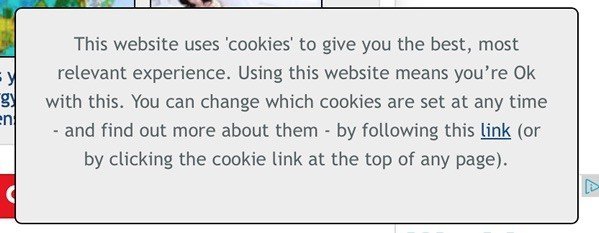If your blog has readers from EU countries (which you should assume it will), you'll need to notify your readers that cookies are used by your blog, and obtain consent to place them to comply with EU Cookies Directive.
You can do this by placing a pop-up notification in the header or footer of your blog that lets readers know that cookies will be used, as well as a link to your Cookies Policy or a section in the Privacy Policy and information on how cookies permissions can be changed or revoked by your readers.
Make the pop-up remain on the screen until a reader actively clicks on something that clearly implies consent for placing cookies is given, such as the "Continue" link in the cookies notice below from the BBC website. This will ensure that proper notice has been given and accepted.

You can use the more passive method of alerting visitors that cookies are used, but the more active method described above is recommended.
A passive method involves giving a notification that cookies are in use, but including language that says a user accepts this cookie usage simply by continuing to use the website. If a user to the website simply clicks anywhere else on the site, the notification box goes away and cookies will then be stored by the website.
Below is an example of a more passive notification and acceptance method:

Cookies placement is something that you will want to look into with whatever third party advertising company or program you use, such as Google AdWords or AdRoll or AppNexus.
Third parties commonly use cookies to create custom advertising campaigns that collect data about what types of websites a user has visited in the past and then use this data to provide relevant, personalized advertising.
If your blog will be using third-party vendors such as Google AdWords or AdRoll or AppNexus to create custom advertising campaigns, you need to let your visitors know this by including a section in your Privacy Policy agreement.
Chances are that at least one of these conditions will be met either immediately or as your blog develops, especially if you wish to have a successful and popular blog that takes advantage of common promotional techniques such as allowing users to subscribe to updates via email, or tracking how many visitors your blog gets.






0 Comments